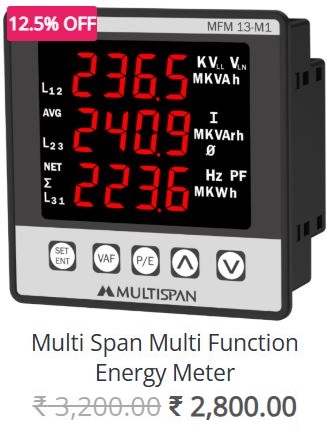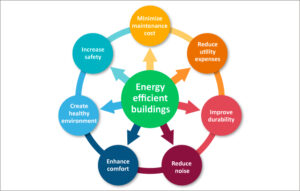Energy management is a critical focus for industrial facilities aiming to optimize their operations, reduce energy consumption, and lower costs. With the rising global demand for energy and increasing environmental concerns, companies need to adopt best practices that not only enhance their energy efficiency but also contribute to sustainability. Here’s a guide to energy management best practices that industrial facilities can implement to maximize energy savings and operational efficiency.
1. Conduct an Energy Audit
The first step toward effective energy management is understanding where and how energy is being consumed. An energy audit is a comprehensive evaluation of energy use across a facility. It helps identify inefficiencies, waste, and areas of improvement. By working with energy experts, industrial facilities can uncover hidden opportunities for energy savings, such as outdated machinery or poorly insulated areas that are wasting heat or air conditioning.
2. Implement Energy Management Systems (EMS)
An Energy Management System (EMS) allows facilities to monitor, control, and optimize their energy consumption in real-time. Modern EMS software can track energy use across different departments, analyze patterns, and highlight anomalies that may indicate inefficiencies. By using automated systems to monitor energy use, managers can identify potential issues before they become costly problems, allowing for prompt adjustments.
3. Invest in Energy-Efficient Equipment
Upgrading equipment to energy-efficient models is one of the most effective ways to cut energy costs. Older machines and technologies often use more power and generate higher operational costs. By replacing inefficient equipment with energy-saving alternatives such as LED lighting, high-efficiency motors, and energy-efficient HVAC systems, facilities can drastically reduce energy consumption. Considerations should also include equipment with variable frequency drives (VFDs) that adjust power usage based on demand.
4. Optimize Heating, Ventilation, and Air Conditioning (HVAC) Systems
HVAC systems account for a significant portion of energy use in many industrial facilities. Optimizing the HVAC system can lead to substantial savings. Ensure that HVAC units are regularly maintained, and consider implementing a programmable thermostat to regulate temperature and reduce energy consumption during off-hours. Additionally, consider using energy recovery systems that capture waste heat and use it for heating or cooling, thereby minimizing reliance on external energy sources.
5. Adopt Smart Lighting Solutions
Lighting can consume a large chunk of energy in industrial facilities. Implementing smart lighting systems that adjust based on occupancy or natural daylight can help cut energy costs. Motion sensors, dimmers, and automated lighting schedules can ensure that lights are only on when needed. Replacing conventional lighting with LED bulbs can further reduce energy consumption as LEDs are more energy-efficient and have a longer lifespan compared to traditional incandescent bulbs.
6. Improve Insulation and Building Envelope
Energy loss due to poor insulation is a common issue in many industrial facilities. Proper insulation and a well-sealed building envelope can significantly reduce the need for heating and cooling, leading to lower energy bills. Consider upgrading insulation in walls, ceilings, and floors, as well as installing energy-efficient windows and doors that prevent heat from escaping during the winter or entering during the summer. A well-insulated facility is more comfortable for workers and more energy-efficient overall.
7. Implement Preventative Maintenance Programs
Routine maintenance is key to ensuring that equipment and systems operate at peak efficiency. Preventative maintenance includes tasks like cleaning filters, checking for leaks in compressed air systems, lubricating motors, and ensuring all equipment is functioning properly. By identifying and addressing issues early, industrial facilities can avoid energy waste, reduce downtime, and extend the lifespan of machinery, resulting in long-term energy and cost savings.
8. Encourage Employee Engagement
A successful energy management strategy requires the involvement of all employees. Educating staff on the importance of energy efficiency and encouraging them to adopt energy-saving practices can create a culture of sustainability within the organization. Employees should be trained to recognize energy wastage, turn off equipment when not in use, and report any energy-related issues they encounter. By fostering a collective effort to reduce energy consumption, companies can achieve better results in their energy-saving initiatives.
9. Leverage Renewable Energy Sources
Integrating renewable energy sources such as solar, wind, or geothermal can reduce a facility’s dependence on non-renewable resources and lower its carbon footprint. Depending on the location, installing solar panels or purchasing renewable energy from local providers can be a cost-effective solution in the long run. In some cases, government incentives or subsidies may be available to help offset the initial investment in renewable energy systems.
10. Set Energy Reduction Goals and Track Progress
Setting clear energy reduction goals is essential for measuring the success of your energy management efforts. Goals should be specific, measurable, attainable, relevant, and time-bound (SMART). These targets should be regularly reviewed, and progress should be tracked using energy performance metrics such as energy consumption per unit of production or energy use intensity. Continuous monitoring and reporting of progress will help identify areas that need improvement and keep teams motivated to achieve energy-saving targets.
11. Utilize Demand Response Programs
Many energy providers offer demand response programs that incentivize facilities to reduce energy consumption during peak demand periods. By participating in these programs, industrial facilities can lower energy costs while helping to stabilize the grid. Implementing energy-saving measures such as turning off non-essential equipment, adjusting temperature settings, or shifting production schedules can help meet these demand response requirements.
12. Continuously Review and Improve Energy Management Practices
Energy management is an ongoing process, not a one-time task. To maintain continuous improvements, facilities should regularly assess their energy management strategies and look for new opportunities to enhance efficiency. New technologies, energy-saving techniques, and best practices are constantly evolving, and staying informed and flexible will ensure that the facility remains at the forefront of energy efficiency.
Conclusion
Energy management best practices are essential for industrial facilities looking to reduce their energy consumption, cut operational costs, and contribute to environmental sustainability. By conducting energy audits, implementing energy-efficient technologies, optimizing systems, and engaging employees, industrial facilities can achieve significant energy savings while improving their bottom line. Energy management is not just about reducing costs—it’s about creating a sustainable future for both businesses and the planet.
By adopting these energy management practices, industrial facilities can not only thrive in a competitive market but also help drive the global shift toward a more energy-efficient and sustainable economy.















